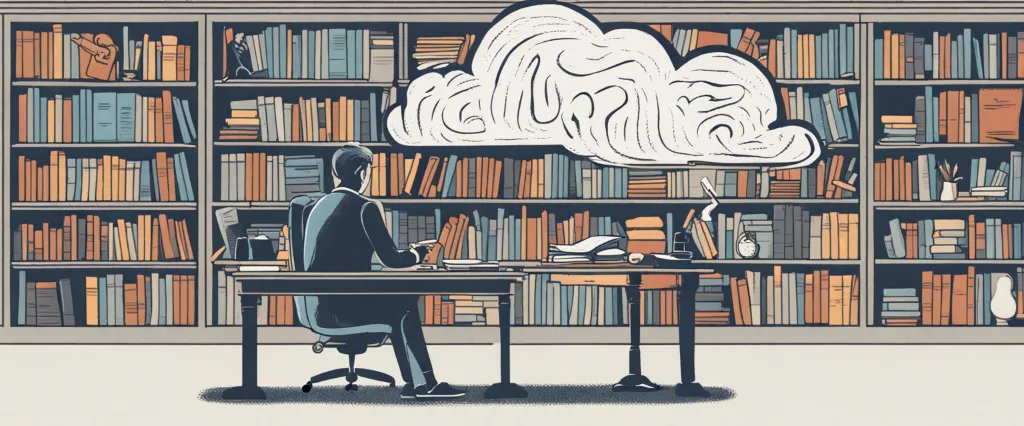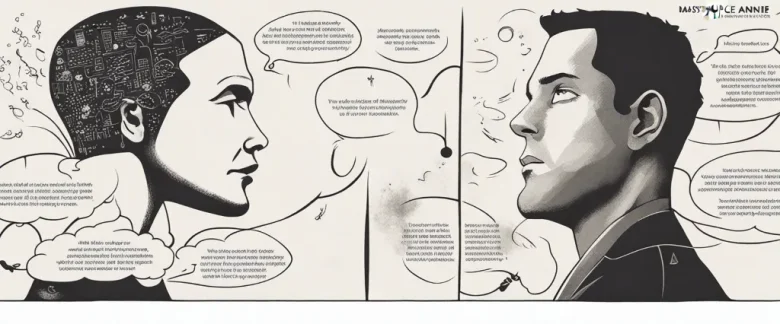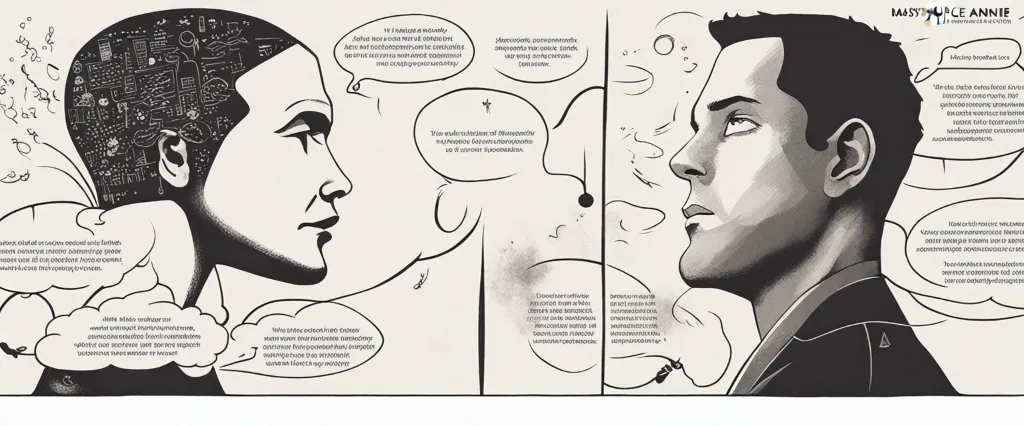In “Thinking in Bets” Annie Duke, a former professional poker player, reveals how embracing uncertainty and thinking probabilistically can enhance decision-making skills in all aspects of life. Drawing from her remarkable experiences at the poker table, Duke provides a fresh perspective on decision making, emphasizing the importance of embracing uncertainty and focusing on the process rather than solely focusing on outcomes. As a world champion poker player who has turned her expertise into advising professionals in various fields, Duke’s insights offer valuable lessons on how to navigate the complex and ever-changing nature of decision making. In this summary, we explore Duke’s key ideas and effective strategies for thinking probabilistically, challenging our biases, and enhancing our decision-making abilities.
Chapter 1: Embracing Uncertainty
Duke, a former professional poker player, draws parallels between poker and life, stressing the importance of understanding that the outcomes of our decisions are influenced by factors beyond our control.
Duke highlights how humans tend to have a natural aversion to uncertainty, seeking a sense of order and control. However, she argues that embracing uncertainty is crucial for making better decisions. By acknowledging that we cannot predict or control every outcome, we can navigate uncertainty more effectively and accept the element of luck that exists in every decision.
The author introduces the term “resulting” to describe the tendency to judge decisions based on outcomes rather than focusing on the quality of the decision itself. This tendency leads individuals to believe that good outcomes are a direct result of good decisions, and vice versa. Duke emphasizes that this way of thinking is flawed because it overlooks the role of luck in the outcome.
To overcome the limitations of resulting, Duke encourages readers to adopt a probabilistic mindset. Rather than seeking certainty, a probabilistic mindset acknowledges that the future is uncertain and embraces the power of probabilities. By assigning a probability to different outcomes, individuals can make more informed decisions and avoid attributing outcomes solely to their actions.
Finally, Duke introduces the idea of “bet with a spread,” which entails considering multiple possible outcomes and their probabilities before deciding. This approach allows individuals to make more nuanced decisions by weighing various factors and potential outcomes rather than simply focusing on one narrow path.
Chapter 2: The Power of Probabilistic Thinking
Duke introduces the concept of resulting, where we often judge the quality of a decision based on its outcome rather than the quality of the decision-making process. This approach can be flawed as outcomes can be influenced by factors beyond our control. By shifting our focus to the decision-making process and assessing it based on its quality, we can make more rational and objective evaluations.
Probabilistic thinking involves assigning probabilities to various outcomes based on the available information. It helps us acknowledge uncertainty and make more informed decisions. Duke suggests that improving our skill in probabilistic thinking is crucial for accuracy and learning, and she provides multiple examples to illustrate this point.
The chapter also emphasizes the importance of updating our beliefs when new evidence emerges. Duke uses the example of a weather report to demonstrate how our predictions can change with more information, and we should be open to adjusting our views accordingly. To become better decision-makers, we need to be willing to shift our positions based on new insights.
In conclusion, By embracing uncertainty and updating our beliefs based on new evidence, we can improve our decision-making skills and make more accurate predictions.
Chapter 3: Making Better Decisions
Duke explains that our decisions are often driven by the desire for certainty, as it provides us with a feeling of control and security. However, she argues that in many situations, certainty is an illusion, as we are faced with inherent uncertainty and unpredictability. To make better decisions, Duke suggests adopting a probabilistic mindset, where we assess the likelihood of different outcomes based on existing information.
The author introduces the concept of resulting, which refers to the tendency to judge our decisions based on its outcomes rather than the quality of the decision-making process itself. She emphasizes that outcomes are influenced by factors beyond our control, such as luck, and therefore using resulting to evaluate decisions can lead to poor decision-making in the long run.
Duke proposes that instead of focusing on outcomes, we should “think in bets.” This means making decisions based on the best available information at the time, considering the probabilities and potential risks involved. By doing so, we can detach ourselves from the emotional attachment to outcomes and focus on the decision-making process itself.
She also encourages the concept of keeping decision journals, where we document our decision-making processes and update them with feedback and lessons learned. These journals allow us to reflect on and refine our decision-making skills over time, enabling us to make better decisions based on past experiences.
Chapter 4: Evaluating Decision Quality

Duke introduces the concept of resulting, which refers to the tendency of judging decisions solely based on their outcomes rather than the quality of the decision itself. She warns against this type of thinking, as it can lead to faulty evaluations and hinder our ability to learn from mistakes. Instead, she suggests evaluating decisions based on the information available at the time and the process used to reach those decisions.
To evaluate decision quality effectively, Duke emphasizes the need to distinguish between decisions and outcomes. Decisions, she explains, are the choices we make based on incomplete and uncertain information, while outcomes are the results that occur as a result of those decisions. By separating the two, we can avoid falling into the trap of resulting and focus on evaluating the decision-making process objectively.
The author introduces a simple method called a decision-premortem to evaluate decisions before they are made. This involves imagining potential outcomes, both positive and negative, and analyzing the reasons behind each possibility. By considering different scenarios, individuals can identify potential flaws in their decision-making and develop strategies to mitigate risks.
Additionally, Duke stresses the significance of feedback in evaluating decision quality. Seeking feedback from others allows us to gain different perspectives and identify blind spots, ultimately helping us improve our decision-making skills. However, she emphasizes the importance of seeking feedback from diverse sources to avoid confirmation bias and gain a more comprehensive understanding of the decision’s quality.
By focusing on the decision-making process, considering multiple scenarios, and seeking diverse feedback, individuals can enhance their decision-making skills and avoid falling into the resulting mindset.
Chapter 5: Learning from Results
Duke introduces the concept of “resulting,” which is the tendency to judge decisions solely on the outcome rather than evaluating the decision-making process itself.
Duke discusses the influence of luck and uncertainty on our decisions and cautions against over-emphasizing outcomes to evaluate our choices. Instead, she urges readers to assess the quality of their decisions based on the information available at the time of making the choice. Duke argues that it is crucial to separate results from decisions so as not to fall into the trap of resulting.
The author highlights several cognitive biases that contribute to our tendency to focus on results. These biases include hindsight bias, self-serving bias, and confirmation bias. By understanding and recognizing these biases, Duke suggests that we can overcome the inclination to judge decisions solely by their outcomes.
To effectively learn from results, Duke proposes conducting “pre-mortems” and “outcome reviews.” Pre-mortems involve imagining a future scenario where our decision fails and working backward to identify potential pitfalls in the decision-making process. Outcome reviews, on the other hand, help us analyze past decisions by examining how we arrived at our choice and how external factors affected the outcome.
By adopting a more nuanced perspective on results, Duke believes we can learn from both positive and negative outcomes, ultimately improving our decision-making skills. She encourages embracing uncertainty and practicing mindfulness when evaluating our choices to overcome the tendency to excessively judge decisions based on their results.
Chapter 6: Dealing with Cognitive Biases
Duke begins by emphasizing that human brains are not naturally wired to make accurate predictions and decisions. Instead, our minds often rely on heuristics and biases that can cloud our judgment.
The chapter delves into four main cognitive biases: motivated reasoning, confirmation bias, hindsight bias, and availability bias. Motivated reasoning refers to the tendency of individuals to cherry-pick information that supports their preexisting beliefs. Confirmation bias is the inclination to seek out and interpret information that confirms one’s existing beliefs, while disregarding or dismissing contradictory evidence.
Hindsight bias, on the other hand, is the inclination to believe that an outcome was inevitable or predictable after it occurs, despite lacking foresight beforehand. This bias often leads to distorted perceptions of one’s own decision-making abilities. Lastly, availability bias refers to the tendency to rely on easily accessible information and vivid examples when making judgments.
Duke explains how these biases can hinder our decision-making process by distorting our perception of reality. She offers strategies to counteract these biases, such as seeking out diverse and contradictory viewpoints, maintaining a growth mindset, and using decision journals to reflect on and learn from previous choices.
By understanding and becoming aware of these cognitive biases, Duke argues that we can improve our decision-making abilities and reduce the likelihood of making poor judgments. She highlights the importance of considering alternative perspectives, challenging our own assumptions, and actively seeking out diverse information to make more accurate predictions and decisions.
Chapter 7: Embracing a Growth Mindset
Duke begins by distinguishing between two mindsets: a fixed mindset and a growth mindset. Those with a fixed mindset believe that abilities and skills are innate and unchangeable. They view failure as a reflection of their limitations and are less likely to take risks. On the other hand, those with a growth mindset understand that abilities can be developed through effort and practice. They see failure as an opportunity to learn and improve.
To illustrate the importance of a growth mindset in decision-making, Duke highlights an experiment by Dr. Carol Dweck. The study found that praising children for their effort rather than intelligence led to better performance and resilience. Duke applies this to the realm of decision-making, explaining that when we embrace a growth mindset, we can approach our decisions with a curiosity to learn and adapt.
Duke also explores how having a growth mindset can help in understanding and evaluating our decision-making process. By viewing our decisions as opportunities for growth and learning, we become more open to feedback and willing to acknowledge our mistakes. This mindset allows us to make better decisions in the future and avoid repeating the same errors.
Moreover, a growth mindset can help us overcome cognitive biases that hinder our decision-making. By embracing uncertainty and acknowledging that our beliefs are not set in stone, we become more open-minded and willing to update our beliefs in light of new information.
By recognizing that our abilities can be developed, seeing failure as an opportunity to learn, and embracing uncertainty, we become better equipped to make informed and adaptive decisions.

Chapter 8: Building a Decision-Making Framework
Duke stresses that our decisions should be aimed at improving the quality of our decision-making rather than focusing solely on outcomes.
The chapter begins by emphasizing the role of uncertainty in decision-making. Duke argues that we often tend to overestimate the influence of our decisions on outcomes, leading to flawed decision-making practices. To counteract this, she proposes utilizing a probabilistic thinking approach—a framework that acknowledges uncertainty and enables decision-makers to weigh the likelihood of different outcomes.
Duke highlights the need to embrace the idea of “resulting.” Resulting refers to the tendency to judge the quality of a decision based on its outcome rather than evaluating the quality of the decision-making process itself. She explains that this mindset traps us into believing that good outcomes were the result of good decisions and vice versa.
To combat resulting, Duke suggests implementing decision diaries. These diaries require individuals to document their decision-making process before the outcome is known, allowing them to evaluate the potential biases and flaws in their reasoning. By focusing on the process rather than solely on outcomes, decision diaries help break the resulting cycle.
Another valuable tool introduced is the “premortem.” Unlike a traditional postmortem that analyzes failures after they occur, a premortem involves imagining potential failures in advance. This technique enables decision-makers to identify potential pitfalls and develop contingency plans to address them proactively.
In conclusion, By embracing uncertainty, implementing decision diaries, and using techniques such as premortems, individuals can improve their decision-making process and avoid falling into the trap of resulting. Ultimately, the goal is to continuously refine our ability to make better decisions based on thoughtful analysis, rather than blindly relying on outcomes alone.
After Reading
In conclusion, “Thinking in Bets” by Annie Duke offers valuable insights into decision-making and navigating uncertainty. Duke’s background as a professional poker player provides a unique perspective on how to make better choices in an unpredictable world. She emphasizes the importance of acknowledging our inherent cognitive biases and actively working to overcome them. Duke’s concept of “thinking in bets” encourages us to view decisions as probabilities rather than absolutes, allowing us to make more informed and adaptable choices. By adopting a more probabilistic mindset and focusing on the process rather than outcomes, readers can improve their decision-making skills and navigate uncertainty with greater confidence. Overall, “Thinking in Bets” provides practical strategies and thought-provoking ideas that can benefit anyone seeking to make better decisions in various aspects of their lives.
1. The Greatest Salesman in the World” by Og Mandino: If you’re looking for a book that seamlessly blends inspiring storytelling with timeless wisdom on success and personal growth, this is a must-read. Mandino’s book presents a unique approach to achieving success by following the life-changing principles of ten ancient scrolls. Each scroll offers practical and philosophical advice that will surely impact both your personal and professional life.
2. Think and Grow Rich” by Napoleon Hill: As one of the most renowned books on personal development and financial success, Hill’s classic work delivers a powerful message: your thoughts have the potential to shape your reality. Through the examination of successful individuals, Hill uncovers the secrets to achieving wealth and purposeful living. This book is a treasured resource for anyone seeking to unlock their potential and manifest their desires.
3. 12 Rules for Life” by Jordan Peterson: Dr. Jordan Peterson offers twelve profound rules rooted in psychology, philosophy, and his personal experiences. Peterson’s book will guide you through various life domains, encouraging you to take responsibility for your choices, face adversities, and transform yourself in the process. With Peterson’s engaging writing style and practical advice, this book serves as a valuable guide to navigate the complexities of modern life.
4. Essentialism: The Disciplined Pursuit of Less” by Greg McKeown: If you find yourself overwhelmed with endless tasks and struggling to prioritize what truly matters, McKeown’s book is a game-changer. “Essentialism” challenges the notion that we must do it all, offering a systematic approach to focus on what is vital and eliminate the rest. With practical strategies, empowering stories, and insightful anecdotes, this book will help you reclaim your time and energy for the things that truly bring value and fulfillment.
5. Man’s Search for Meaning” by Viktor E. Frankl: This thought-provoking memoir offers a unique perspective on finding purpose and meaning in life, even amidst the darkest of circumstances. Frankl’s personal account of his experiences in Nazi concentration camps highlights the indomitable human spirit and the role of individual choice in shaping one’s destiny. With its philosophical insights and profound reflections, this book will inspire you to ponder the deeper questions of existence and live a life rich with meaning.




